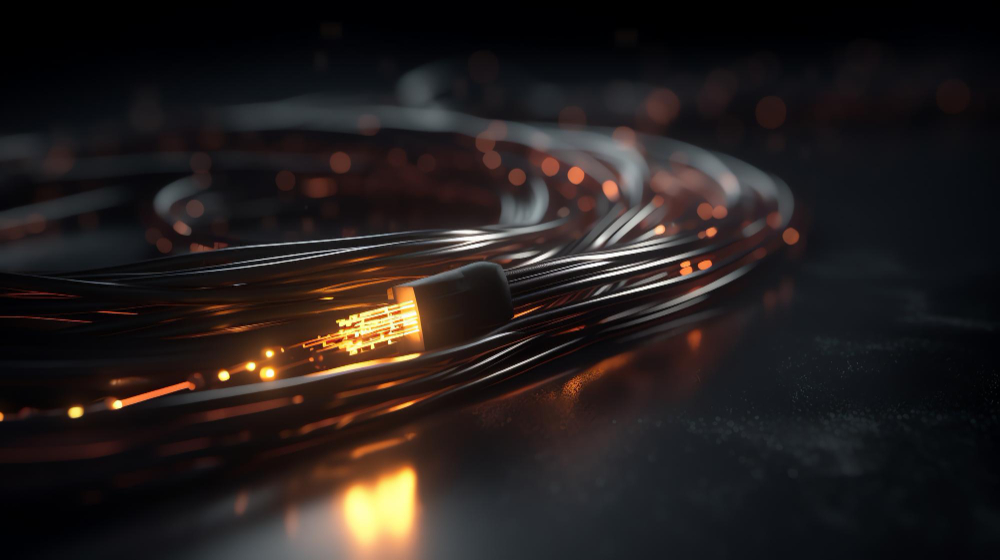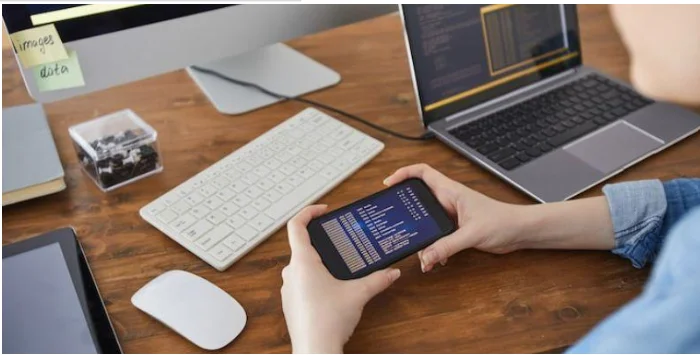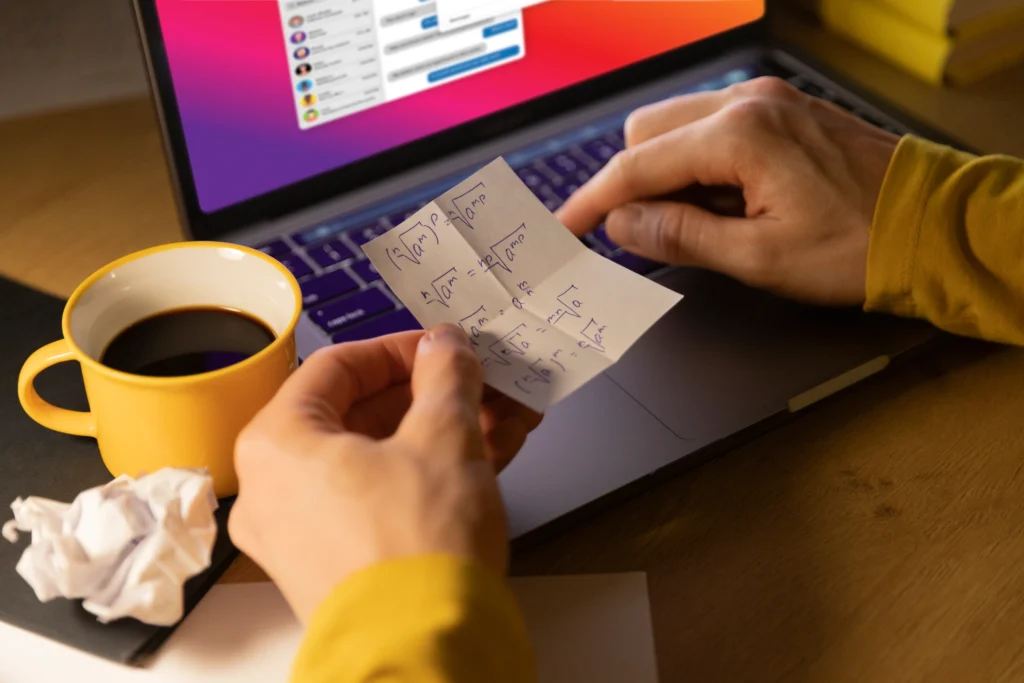Maximize the Durability of Your Lightning Charging Cables with a Clever

Are you tired of constantly replacing your lightning charging cables due to fraying, bending, or simply wearing out too quickly? We have the ultimate solution for you! With this handy little trick, you can wave goodbye to thin and unstable cables and hello to maximum durability. We’re going to share a quick yet handy tip in this blog post to help you get the most out of your lightning charging cables. Prepare to save frustration and money by never having to worry about cable damage again!”
Introduction: The Importance of Durable Charging Cables
In today’s digital age, smartphones and other electronic devices have become an integral part of our daily lives. We depend on these gadgets for a variety of things, from managing our work tasks to maintaining relationships with friends and family. However, our devices are only as good as their charging cables, regardless of how sophisticated or costly they are. This is the point at which sturdy charging cables become crucial.
When it comes to charging cables, most people tend to overlook their importance and opt for cheaper options without considering the long-term effects. However, investing in a durable charging cable can save you a lot of frustration and money in the long run.
Reliability:
One of the primary reasons why durable charging cables are important is reliability. A sturdy and well-made cable ensures that your device gets charged quickly and efficiently every time you plug it in. On the other hand, cheaply made or flimsy cables may not provide a stable connection, leading to slow or interrupted charging.
Durability:
Another crucial factor is durability. Charging cables go through a lot of wear and tear due to constant use, bending, twisting, and pulling. This makes them prone to damage easily if they are not made with high-quality materials. A durable cable will be able to withstand this daily usage without fraying or breaking at the ends.
Understanding the Common Causes of Cable Damage
Cables are an essential part of our everyday lives, especially when it comes to charging our devices. We frequently forget to give these cables the proper upkeep and care, despite how important they are. This may cause damage and shorten the cable’s lifespan, necessitating frequent replacements and extra expenses.
It’s critical to comprehend the typical causes of cable damage if you want to minimize the lifespan of your lightning charging cables and prevent this inconvenience.
By being aware of these factors, you can take proactive measures to prevent them and prolong the life of your cable.
1. Bending or twisting
One of the most common causes of cable damage is bending or twisting at sharp angles. When we use our devices while they are connected to a charger, it creates tension on the cable as we move around with our phone or tablet. Over time, this repetitive stress can cause small cracks or breaks in the internal wiring or outer covering of the cable.
Try not to bend or twist your lightning charging cable too much when using your device to avoid this problem. Additionally, when disconnecting a cable from a device, hold onto both ends and gently pull them apart rather than pulling on one end of the cable.
2. Overheating
Excessive heat can also cause damage to lightning charging cables. Leaving your device plugged in for extended periods or using it while it’s charging can generate heat that affects both the device and its cable. This heat can weaken the internal components of the wire and decrease its ability to transmit electricity efficiently.
Tips for Maintaining and Extending the Life of Your Lightning Charging Cables:
Although lightning charging cables are necessary to keep our gadgets powered on and connected, they are frequently prone to breaking. Explore our premium cable organizers and protective accessories to extend the life of your Lightning charging cables and keep your devices powered seamlessly. But you can prolong the life of your lightning charging cables and avoid the trouble and cost of having to replace them all the time with proper care and maintenance. Here are some tips for maintaining and extending the life of your lightning charging cables:
- Avoid excessive bending or twisting: One of the main reasons why lightning charging cables get damaged is due to excessive bending or twisting. When using your cable, try to avoid bending it at sharp angles or twisting it too much as this can cause internal wires to break. If possible, use cable organizers or clips to keep your cable straight while in use.
- Unplug carefully: It’s tempting to just yank out your lightning cable when you’re done charging, but this can damage both the connector and the port on your device. To prevent any damage, make sure to unplug your cable by gently pulling on the plug itself rather than pulling on the actual cord.
- Keep them away from heat sources: Elevated temperatures have the potential to harm not only your electronics but also their add-ons, such as lightning cables. Keep your cables away from heat sources like heating vents, direct sunlight, and other sources that could melt or distort them.
- Clean them regularly: Over time, dirt and debris can accumulate on your lightning charging cable causing it to become less efficient in transferring power and data.
– Proper Storage Techniques
Proper storage techniques are essential for extending the life of your lightning charging cables. By following these simple tips, you can ensure that your cables remain in good condition and continue to work efficiently for a longer period.
- Avoid Overbending: Overbending is one of the most frequent ways that cables get damaged. Usually, this occurs when we firmly wrap our cables around our gadgets or other items. Frayed or damaged cables may result from this over time as the internal wires weaken and break.
To avoid this, try to gently coil your cable without bending it too much when storing it.
- Use Cable Organizers: Another way to prevent over-bending is by using cable organizers. These come in various shapes and sizes and are designed specifically to keep your cables neat and organized without causing any damage. You can find them online or at any electronics store, or you can even make one yourself using materials like rubber bands or binder clips.
- Keep Cables Away from Heat Sources: Exposing your charging cables to excessive heat can cause the plastic coating on the wires to melt or warp, leading to potential damage or fire hazards. Therefore, make sure you store your cables away from direct sunlight, heaters, stoves, or any other sources of heat.
– Cleaning and Maintenance Tips
Cleaning and maintaining your lightning charging cables is essential to ensure their durability and longevity. Here are some tips to help you keep your cables in top condition:
- Avoid bending or pulling the cable excessively: Although the internal wires in lightning charging cables are meant to be flexible, excessive bending or pulling can harm them. When handling the cable, use gentleness and refrain from twisting or pulling on it.
- Keep it clean: Dirt, dust, and debris can accumulate on your charging cable over time, which can affect its performance. To prevent this, regularly wipe down your cable with a soft cloth and mild cleaning solution. Avoid using harsh chemicals as they can damage the outer coating of the cable.
- Store it properly: When not in use, store your lightning charging cable in a safe place where it won’t get tangled or bent. This will help prevent any unnecessary strain on the wires and keep them from getting damaged.
- Don’t yank out the cord from devices: Many people have a habit of quickly pulling out their charging cable from their device without properly disconnecting it first. This may result in damage to the cable’s connector end as well as the USB port on your device. Never pull on the cable; instead, hold onto the plug to carefully remove the cable.
- Use a good quality case: If you travel frequently or carry your charging cable around with you, investing in a good quality case can help protect it from any accidental damage or tangling.
Protective Measures to Prevent Wear and Tear:
-
Use a Cable Protector:
One of the simplest and most effective ways to prevent wear and tear on your lightning charging cables is by using a cable protector. These are small silicone or plastic covers that fit over the end of your cable where it connects to your device. They provide an extra layer of protection against bending, twisting, and fraying, which are common causes of damage to cables.
Avoid Over-Bending:
Your lightning charging cable’s internal wires may become weakened if it is overbent, which could eventually cause it to break and fail. Instead of tightly winding your cable around your hand or device when storing it, make sure to gently coil or loop it to avoid this. Additionally, when using the cable, try not to bend it at sharp angles.
-
Keep Cables Away from Heat Sources:
Exposure to heat can cause the outer casing of your charging cable to melt or become brittle, making it more prone to damage. To avoid this, keep your cables away from direct sunlight, heaters, or other sources of heat.
Invest in High-Quality Cables:
It may be tempting to buy cheaper lightning charging cables, but they often lack durability and can easily get damaged. Investing in high-quality cables may cost more upfront but will save you money in the long run as they are built with better materials and construction techniques that make them more resistant to wear and tear.
Delve into the world of interior lighting and discover why installing pendant lights is a game-changer for your home decor. Find out the transformative benefits in our latest blog post: Why You Should Install Pendant Lights.
The Clever Solution: Using a 3.5mm Audio Cable to Extend Your Lightning Charging Cable’s Lifespan:
The constant use and wear and tear of charging cables can be frustrating, especially when they start to fray and break easily. This is a common issue faced by many smartphone users, as the standard lightning charging cable that comes with their device is not always durable enough to withstand daily use.
Thankfully, there’s a clever fix for this issue: you can make your lightning charging cable last longer by using a 3.5mm audio cable. By using this easy trick, you can cut down on the amount of waste that comes with replacing charging cables regularly.
How then does it operate? Your lightning charging cable’s weakest point, the connector end, can be effectively reinforced by using a 3.5mm audio cable, which is typically used to connect headphones or speakers to devices. Over time, fraying and breaking in this area are frequently caused by the thin and delicate wiring.
To implement this solution, all you need is a 3.5mm audio cable with male-to-male connectors (the same size as headphone jacks) and your lightning charging cable. Simply insert one end of the audio cable into the bottom of your phone or device’s charging port, just like you would with the original lightning cable. Then connect the other end of the audio cable to the female port on your lightning charger.
– How the 3.5mm Audio Cable Works
For many years, the 3.5mm audio cable—also referred to as the auxiliary or aux cable—has been a mainstay in the audio industry. With the help of this straightforward yet effective tool, we can connect our devices and take advantage of high-quality sound without the need for Bluetooth pairing or wireless connections.
But have you ever wondered how this small cable works? Understanding the inner workings of the 3.5mm audio cable can help you better appreciate its functionality and maximize its durability.
At first glance, the 3.5mm audio cable may seem like a basic wire with two connectors on either end. However, there is more to it than meets the eye.
The key component of an audio cable is its conductors – thin metal wires that carry electrical signals from one end to another. In most cases, these conductors are made of copper due to their excellent conductivity properties.
There are two connectors on the audio cable: a female connector (also called a sleeve) and a male connector (also called a tip). The majority of common headphone jacks and ports on gadgets like laptops, speakers, and smartphones can accommodate these connectors thanks to their meticulous design.
When you plug one end of the 3.5mm audio cable into your device’s headphone jack and the other end into your speaker or headphones, it creates an electrical connection between them through their respective conductors.

Strategic Marketing Solutions for Modern Businesses

How Traffic Management Businesses Are Improving Field Accountability

How to Plan a Last-Minute Holiday Trip with Instant Loan Support

How to Spot a Well-Made Furniture Piece When You’re Not an Expert

Metz for Hair Grooming: A Look at Its Catalog

How QR Codes Are Making Everyday Tasks Easier

Choosing the Right Mobile App Development Company in Australia

Pay Stub Templates You Can Use — Free and Easy to Customize








